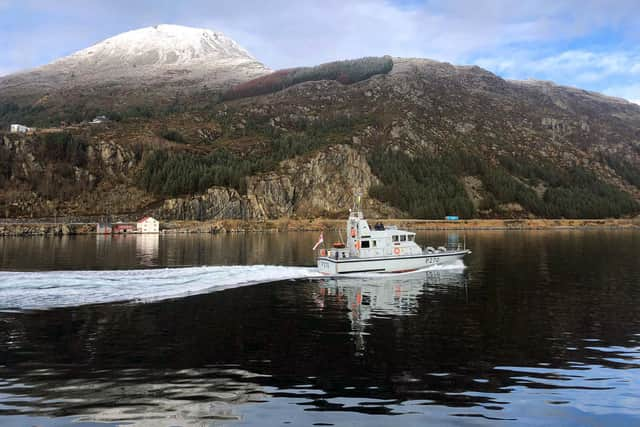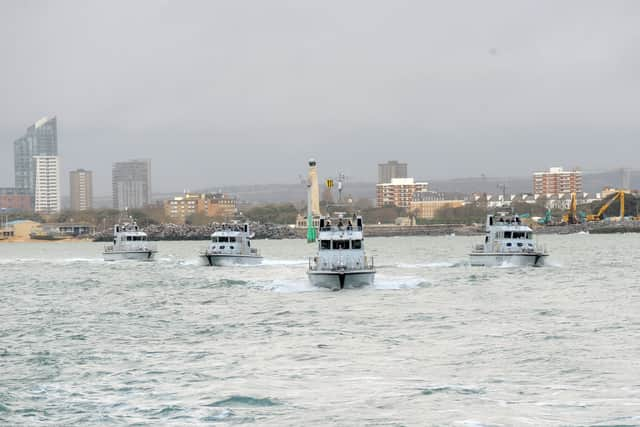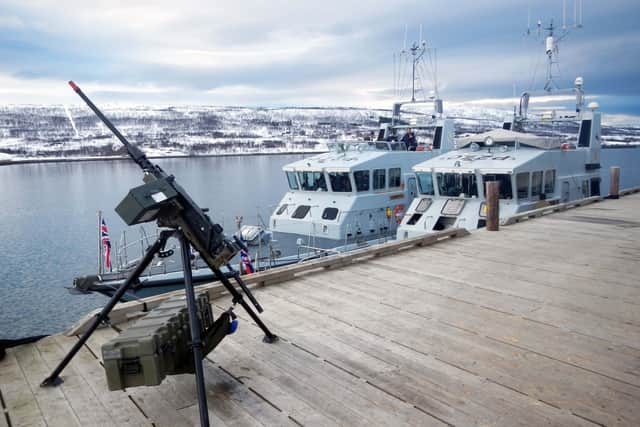Royal Navy: Small Portsmouth ships sail hundreds of miles to Norway for largest Nato mission since Cold War
and live on Freeview channel 276
P2000 patrol vessels HMS Biter, Blazer, Exploit and Trumpeter - all based in Portsmouth - have completed the month long voyage to the North Sea. They have gone further north than any of the ships in their class have gone in their 35 years of service - above the 70th parallel.
The four ships have set sail last month and have travelled nearly 2,200 miles to be part of Exercise Steadfast Defender, which is Nato's largest international operation since The Cold War. They are ready to play their part in supporting raiding forces in the Arctic Circle, while other military personnel operate in Norway’s Finnmark and Troms districts.


Advertisement
Hide AdAdvertisement
Hide AdP2000 vessels are usually tasked with operating in coastal waters and are not often sent on long forward deployments for more than a few days. The ships stopped at several ports along their journey including Ramsgate, Scheveningen and Den Helder in The Netherlands, the island of Helgoland off Germany’s North Sea coast and Esbjerg and Thyboron in Denmark. Sailors then directed the vessels to Norway by travelling up the west coast from Kristiansand in the southwest to north of Tromsø deep inside the Arctic - stopping off at several times for fuel and supplies along the way.
Lieutenant ‘Teddy’ Bradley, the Royal Navy exchange officer to the Royal Norwegian Navy said having completed the journey, the small boats had an important role to play in the exercise. He added: "Deploying four Archer Class to the Arctic is some challenge. Successfully integrating them and their support team into a well-established and specialist force like the Norwegian Coastal Rangers, and achieving operational success is another level entirely. It’s a real demonstration to our adversaries of what NATO can do even with the most unlikely combination of resources.”
Engineer Lieutenant Jack Meggs is part of the specialist staff supporting the deployment to the Arctic. He said: "Bringing the Coastal Forces Squadron to the north of Norway is no mean feat but the teams onboard have proven what we knew to be true, that the Archer class platform is just as capable deep in the Arctic Circle as it is in UK waters."




The patrol vessels can only operate in waves of up to three metres, which has forced crews to shelter in the harbour or skirt around bad weather at times. When operational, they are completely exposed to the elements. Temperatures dropped to -4C, but the windchill took it down to -24C at times.
Advertisement
Hide AdAdvertisement
Hide AdMatthew Read, deputy marine engineer on HMS Biter and Leading Engineering Technician, said: "While the journey north has not been without its challenges, the ships have continued to perform as we have headed north. The trip has been one to remember and now that we are working on Exercise Steadfast Defender, it is providing a fantastic opportunity to work alongside NATO allies and partners.”
Shipmate Kai Hitchcock, engineering technician, said: "Deploying for the first time has been very enjoyable, seeing the Northern lights has been a particular highlight as well as entering the Arctic Circle. I am looking forward to what lies ahead in the exercise as we work with our NATO partners over the coming weeks.” The ships will remain in Norway once Exercise Steadfast Defender finishes. They will then make their way to Bergen for Joint Expeditionary Force training with the Fleet Air Arm and Norwegian Navy at the end of April.
Comment Guidelines
National World encourages reader discussion on our stories. User feedback, insights and back-and-forth exchanges add a rich layer of context to reporting. Please review our Community Guidelines before commenting.